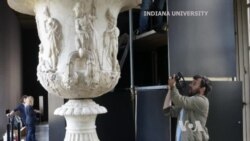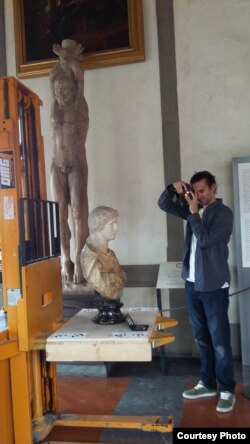The ravages of time, alongside acts of war and religious fundamentalism, have taken their toll on the world's artistic legacy.
Events like the burning of the Library of Alexandria, the destruction of the Bamiyan Buddhas in Afghanistan and the sacking of historic Palmyra in Syria point to the fragility of mankind's shared artistic and cultural heritage.
Museums see themselves as repositories of culture as much as places to display the world's great work.
The Uffizi Gallery in Florence, where the Renaissance was born, has more than 1,250 ancient sculptures on display, and these objects have inspired artists, historians and anthropologists for generations.
If any of them should be destroyed, the loss would be permanent.
Survival of shared heritage
And so the museum is doing everything it can to ensure that they remain available forever, at least digitally. Using affordable technology, Uffizi is working with scientists from Indiana University on a 5-year project to create virtual "backup copies" of the museum's ancient Greek and Roman sculptures.
The process, called photogrammetry, stores the art in digital form. This used to be a slow and expensive process.
No more, says project leader, Indiana University professor Robert Frischer, via Skype.
"Now we can gather the 3-D data on a life-size statue in the matter of a half hour," he explained. "And we can process the data in a matter of a half hour to a couple of hours."
Extremely precise images can be examined from all sides, and zooming in does not lower the resolution — in fact, it reveals more and more detail.
Mirror back in time
Special software even makes it possible to look back in time, according to Frischer.
"The Earth wobbles as it rotates around its axis and around the sun, and the sky doesn't look the same today as it did a couple hundred years ago, let alone a few thousand years ago," he said.
The ultimate goal is to put the objects in a digitally-restored environment with the ability to change its conditions.
"The atmosphere, the position of the sun, or the stars, or the moon, or have people move around in the form of avatars, to see and understand human behavior in the past with respect to these spaces and the decorative objects, like works of art, in the spaces," Frischer explained.
Once finished, the digital backup copies of ancient statues will be published on several online sites and will be available to the general public.










